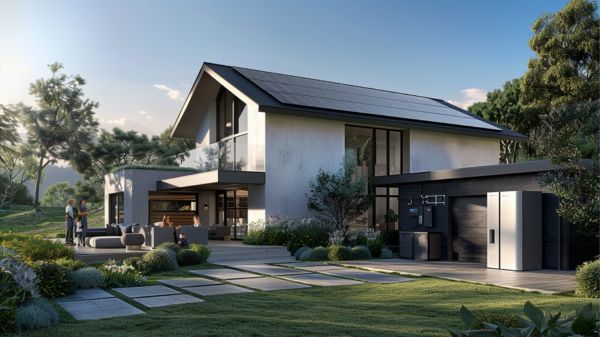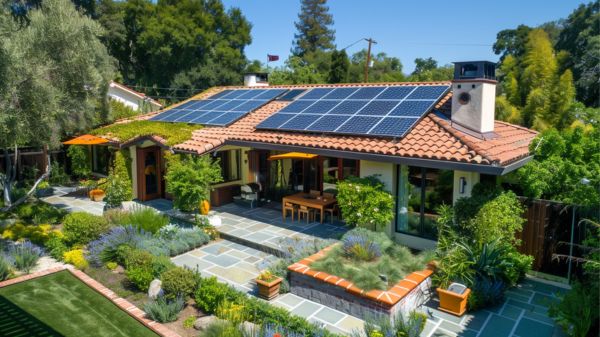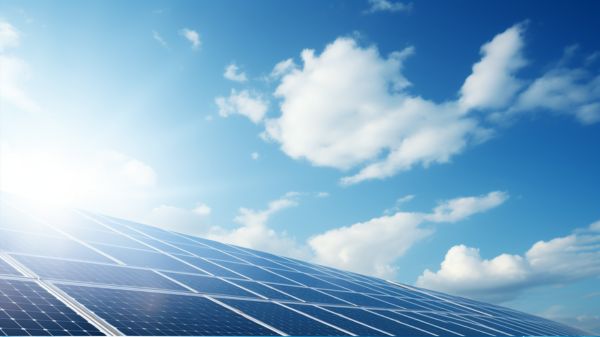Are you tired of skyrocketing energy bills? Do you want to make a positive impact on the environment? Look no further! This homeowner’s guide is here to help you explore affordable renewable energy options.
By harnessing the power of the sun, wind, geothermal sources, biomass, and hydroelectricity, you can reduce your carbon footprint and save money in the long run.
Get ready to take control of your energy future and make a difference in your home and the world.
Solar Power Systems
If you’re considering renewable energy options for your home, solar power systems offer a cost-effective and environmentally friendly solution. Solar panel installation is a straightforward process that involves placing solar panels on the roof or in an open area that receives ample sunlight. These panels absorb sunlight and convert it into electricity, which can be used to power your home.
The benefits of solar energy are numerous. First, it helps reduce your electricity bills, as you’ll be generating your own power. Second, solar energy is a clean and sustainable source of energy, helping to reduce greenhouse gas emissions and combat climate change. Finally, solar power systems require minimal maintenance and can last for several decades, making them a reliable long-term investment for homeowners.
Wind Turbines
To maximize your energy production and savings, consider installing a few small wind turbines on your property. Wind turbines offer several advantages as a renewable energy source.
Firstly, they harness the power of wind to generate electricity, reducing your reliance on fossil fuels. Secondly, wind energy is clean and produces no harmful emissions, contributing to a healthier environment.
Additionally, wind turbines have a relatively simple installation process. Start by identifying an optimal location with consistent wind speeds. Ensure that the turbine is placed high enough to capture the maximum amount of wind. After securing the necessary permits and equipment, follow the manufacturer’s instructions for assembly and connection to your home’s electrical system. Regular maintenance, such as lubricating parts and checking for any damage, will help ensure efficient operation.
Geothermal Heating and Cooling
Maximize your energy efficiency and reduce your carbon footprint with geothermal heating and cooling.
Geothermal heat pumps are a highly efficient and sustainable solution for heating and cooling your home. Unlike traditional HVAC systems, geothermal heat pumps use the earth’s natural heat to provide both heating and cooling.
These systems work by extracting heat from the ground during the winter and transferring it indoors, and in the summer, they remove heat from your home and transfer it back into the ground. This process is incredibly energy efficient, as it eliminates the need to burn fossil fuels for heating and cooling.
Biomass Energy Solutions
When considering affordable renewable energy options for your home, biomass energy solutions offer a sustainable and efficient way to power your household.
Biomass energy is derived from organic materials such as wood, crop residues, and agricultural waste. These biomass fuel sources can be converted into heat, electricity, or biofuels, providing a reliable and renewable energy source.
One of the key benefits of biomass energy is its ability to reduce greenhouse gas emissions, as the carbon dioxide released during combustion is offset by the carbon absorbed during the growth of the biomass. Additionally, biomass energy solutions can help reduce waste by utilizing organic materials that would otherwise end up in landfills.
This not only helps the environment but also saves you money on waste disposal fees. Consider biomass energy solutions as a practical and sustainable option for your home.
Hydroelectric Power Options
If you’re looking for an affordable and renewable energy option that builds on the sustainability of biomass energy solutions, consider exploring hydroelectric power options for your home.
Hydroelectric power harnesses the energy of flowing water to generate electricity. One option is hydroelectric dam construction, which involves building a dam to create a reservoir and using the water’s potential energy to turn turbines. However, this option may not be suitable for all homeowners due to space and environmental considerations.
Another option is small-scale hydroelectric generators, which can be installed in rivers or streams with sufficient water flow. These generators are more compact and easier to install, making them a viable option for homeowners looking to generate their own electricity.
Conclusion
So there you have it, a homeowner’s guide to affordable renewable energy options.
By harnessing the power of solar, wind, geothermal, biomass, or hydroelectric energy, you can’t only reduce your carbon footprint but also save money on your energy bills.
Did you know that installing solar panels can save homeowners an average of $600 per year? It’s an investment that pays for itself in the long run, while also benefiting the environment.
Start exploring these renewable energy solutions and make a positive impact on your home and the planet.




